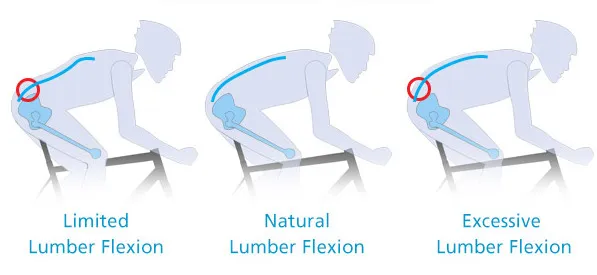
Cycling, a sport enjoyed by professionals and enthusiasts alike, offers numerous benefits improving cardiovascular health, building strength, and providing an efficient way to commute. However, like any physical activity, cycling can lead to discomfort if not approached correctly. One of the most common complaints from cyclists, ranging from beginners to seasoned riders, is hand numbness during or after a ride. While this issue might seem like a mere annoyance, it can impact your comfort, performance, and even safety on the bike. Understanding why your hands go numb while cycling and implementing effective solutions can help alleviate this problem, improving your overall cycling experience.
In this article, we will explore the six primary reasons why your hands may go numb during cycling, regardless of the type of bicycle you ride. We will also provide in-depth, professional solutions for each cause to help you ride more comfortably and efficiently. Whether you ride a road bike, mountain bike, or gravel bike, addressing these issues is essential for optimizing performance and minimizing discomfort. By understanding the physiological and mechanical causes of hand numbness, cyclists can make targeted adjustments to their equipment, posture, and technique.
Improper Handlebar Position and Setup
One of the primary causes of hand numbness while cycling is an improper handlebar setup. This is particularly common among road cyclists but can affect riders of all disciplines. Handlebars that are too high, too low, or too far forward can force a cyclist into an unnatural body position, resulting in excessive pressure on the hands, wrists, and arms. This pressure can compress nerves and blood vessels, causing numbness and tingling sensations in the hands. How To Choose The Best Bike Saddle For Comfort And Performance
Why It Happens:
When the handlebars are not aligned with your natural body position, they create an imbalance in how your weight is distributed. Cyclists who ride with excessively low handlebars may be forced to lean forward too much, placing undue stress on their hands. Conversely, handlebars set too high might force you into a position where your arms and wrists are straightened, placing the entire upper body weight onto the hands. Over time, this sustained pressure can impair blood flow to the hands, compressing the ulnar nerve, median nerve, or radial nerve, resulting in symptoms of numbness.
Solution:
Correcting handlebar position begins with understanding the correct alignment for your body type and riding style. A proper bike fitting should be your first step. For road cyclists, the handlebars should ideally be level with or slightly below the saddle height, especially for those seeking an aerodynamic position. However, if you experience significant discomfort, you may want to raise the handlebars slightly or shorten the reach to achieve a more comfortable riding posture.
For mountain bike and gravel bike riders, the handlebars should be set at a height that allows for a neutral arm position with slight flexion at the elbows. It is crucial that your arms are not locked in a straightened position, as this can concentrate weight on the hands. If you ride a bike frequently or for long distances, a professional fitting session can ensure that your handlebars are positioned according to your body’s specific needs, thus preventing hand numbness.
Additionally, handlebars with adjustable stem lengths allow for fine-tuning the handlebar reach, enabling a customized setup. This small adjustment can have a significant impact on alleviating hand pressure.
Excessive Pressure on the Hands Due to Poor Grip
Another common cause of hand numbness while cycling is excessive pressure resulting from gripping the handlebars too tightly. This can happen when riders maintain a firm grip on the handlebars, particularly in challenging riding conditions such as downhill sections, during climbs, or when riding over rough terrain. Maintaining a tense grip on the handlebars causes the muscles and nerves in the hands to be compressed, which interferes with circulation and leads to numbness.
Why It Happens:
When cycling, especially in high-pressure situations such as descending steep hills, many riders instinctively tighten their grip on the handlebars. This is often a subconscious reaction due to nervousness or the need for more control. However, excessive grip force can lead to an increase in pressure in the carpal tunnel area, where the median nerve runs through the wrist. Over time, this can create discomfort in the hands and result in nerve compression, which causes numbness and tingling sensations.
Solution:
To mitigate the risk of hand numbness, riders should focus on maintaining a relaxed grip on the handlebars. A light grip reduces the amount of pressure placed on the nerves and allows for improved blood flow to the hands. It’s essential to periodically remind yourself to relax your hands, especially during long rides or when cycling on flat roads.
Cyclists should also incorporate hand changes and rest breaks into their riding routine. Shifting hand positions along the handlebars and making slight adjustments to your grip can reduce the repetitive pressure on specific areas of the hands. For riders who experience frequent numbness, padded gloves or grips can help cushion the pressure points, minimizing nerve compression and promoting a more comfortable ride.
Incorrect Riding Posture and Body Alignment

(Source: ilovebicycling)
Posture plays a vital role in how pressure is distributed across the body while cycling. Riders who adopt poor posture, such as hunching their shoulders or leaning too far forward, can inadvertently shift more body weight onto their hands and wrists, which leads to hand numbness. This issue is particularly common among road cyclists who aim for an aggressive, aerodynamic riding position.
Why It Happens:
When cyclists lean too far forward or adopt a hunched posture, it forces their upper body weight onto their hands, increasing the pressure on the palms and wrists. Over time, this can compress the nerves and blood vessels, leading to numbness in the hands. Additionally, riders with poor posture may find themselves straining their shoulders and neck, which can further exacerbate the discomfort in the hands.
Solution:
Cyclists should focus on maintaining a neutral spine and a relaxed, balanced posture while riding. This can be achieved by keeping the back straight, the shoulders relaxed, and the elbows slightly bent. Maintaining a natural curve in the lower back is also essential to avoid excessive forward lean. In particular, road cyclists seeking an aerodynamic position should aim to avoid excessive drop in the handlebars, as it can place too much pressure on the hands and reduce comfort.
Mountain bikers and gravel riders should focus on maintaining an upright or slightly forward-leaning posture that allows for better weight distribution. An ergonomic riding position, combined with regular posture checks, can significantly reduce the strain on the hands, wrists, and upper body.
Inadequate Handlebars or Grips
The design and quality of your handlebars and grips can significantly affect how much pressure and vibration is transmitted to your hands during a ride. Poorly designed or worn-out handlebars and grips fail to absorb the shock and vibrations from the road or trail, which can lead to hand numbness. Learn More About How To Choose The Right Handlebar For Your Bike
Why It Happens:
Rigid or narrow handlebars transmit more road or trail vibration directly to your hands, which over time leads to discomfort. Additionally, handlebars that lack ergonomic features or grips that do not provide sufficient padding can exacerbate the pressure placed on your hands, resulting in numbness. This issue is especially prevalent on rough terrains or during long rides, where prolonged exposure to vibrations can lead to nerve compression.
Solution:
Investing in high-quality handlebars that feature vibration-dampening technology or ergonomic designs can help reduce the amount of shock transferred to your hands. For instance, carbon fiber handlebars are known for their excellent vibration damping properties, making them ideal for road cyclists. Mountain bike handlebars should be wide enough to allow comfortable hand placement, and riders should look for grips or bar tape that provide adequate cushioning to reduce hand fatigue. More About How to Choose The Right Carbon Fiber Handlebars

Ergonomic grips are also highly beneficial, especially for riders experiencing chronic hand numbness. These grips are designed to provide better support for the palms and fingers, reducing pressure on sensitive areas and improving overall comfort. For mountain bikers or gravel riders, padded gloves with additional cushioning can also help absorb shocks and vibrations, preventing numbness during challenging rides.
Handlebar Tape and Its Role in Preventing Hand Numbness
The type of handlebar tape you use can have a significant impact on your comfort, particularly in relation to hand numbness. Road cyclists, in particular, often experience hand fatigue and numbness due to the prolonged exposure to vibrations and pressure, especially during long rides or when riding on rough roads. Handlebar tape plays a vital role in reducing the impact of road vibrations, absorbing shock, and providing a cushion between the rider’s hands and the handlebars. However, not all handlebar tapes are created equal, and the right choice can make a noticeable difference in preventing discomfort and numbness.
Why It Happens:
Handlebar tape serves as a barrier between the handlebars and your hands, preventing direct contact with the hard material of the bars. A lack of cushioning or the use of low-quality tape can result in increased vibration transfer from the road or terrain to the hands, causing nerve compression and discomfort. Additionally, poorly applied or thin tape may not offer sufficient padding, which increases pressure on the palms and fingers. This is particularly noticeable when riding on uneven surfaces, potholes, or when descending at high speeds, all of which can exacerbate hand numbness. More About The Influence Of The Winding Direction Of Handlebar Tape On Riding
Solution:
Choosing the right Handlebar Tape can significantly reduce the vibrations felt through the handlebars. High-quality handlebar tape, such as that made from cork, gel, or foam, provides superior shock absorption and helps to alleviate pressure points. Cork tape, for instance, is known for its vibration-damping properties and is a popular choice for road cyclists. It provides a soft, cushioned feel while maintaining good durability and grip. Gel tapes or foam tapes are also excellent options for cyclists seeking added comfort, as they offer extra cushioning without sacrificing too much in terms of weight or grip. Learn More About How to Choose The Right Bike Bar Tape

When installing handlebar tape, it’s important to ensure it is wrapped tightly and evenly to avoid any creases or loose sections that could negatively affect its performance. A properly wrapped bar tape should be snug enough to stay in place, yet flexible enough to provide an even layer of cushioning across the entire bar.
Additionally, cyclists should consider the thickness and texture of the tape to suit their riding conditions. For example, in the case of gravel or mountain biking, where hand vibrations are more intense, thicker tapes or additional layers of padding can provide better protection. Conversely, road cyclists focused on aerodynamics might opt for a lighter, thinner tape with a better grip for handling precision.
Poorly Fitted or Low-Quality Gloves
Cycling gloves are designed to provide protection, reduce vibration, and enhance comfort, but poorly fitted or low-quality gloves can contribute to hand numbness. Gloves that are too tight, too loose, or lack adequate padding can cause pressure points in the hands, leading to numbness, especially during long rides.
Why It Happens:
Tight gloves can restrict circulation in the hands, causing numbness and tingling. Conversely, gloves that are too loose may cause friction and increase pressure on certain areas of the palms. Inadequate padding or poor glove material can fail to absorb shock, transferring excessive vibration to the hands, which exacerbates numbness.
Solution:
Ensure that your gloves fit snugly but comfortably. A well-fitting glove should not be too tight around the fingers or wrists, as this can impede blood circulation. Additionally, the gloves should have adequate padding in the palms to absorb vibration and reduce pressure on sensitive areas of the hand. Road cyclists typically benefit from lighter gloves with moderate padding, while mountain bikers and gravel riders may prefer thicker, more durable gloves with additional shock absorption.
Selecting high-quality gloves made from breathable, moisture-wicking materials will also help maintain comfort during long rides. When gloves are too tight or too loose, they lose their effectiveness, which can lead to the issues you’re trying to avoid.
Conclusion
Hand numbness is a common problem faced by cyclists of all levels, but it can be mitigated with the right adjustments and preventive measures. Whether caused by improper handlebar position, excessive pressure on the hands, incorrect riding posture, inadequate handlebars, poorly fitted gloves, underlying health conditions, or insufficient handlebar tape, understanding the root cause of hand numbness is essential for finding an effective solution.
By optimizing your bike fit, adopting better riding techniques, choosing the right gear such as handlebar tape, and regularly assessing your setup, you can greatly improve your comfort, performance, and overall riding experience. If numbness persists, seeking advice from a professional bike fitter or healthcare provider can help address any underlying issues. Cycling should be an enjoyable and pain-free activity, so take the time to make these adjustments and enjoy the ride without the discomfort of numb hands.



